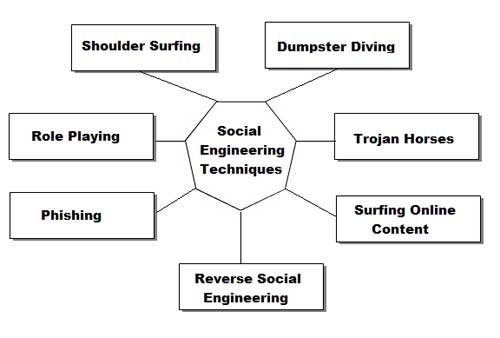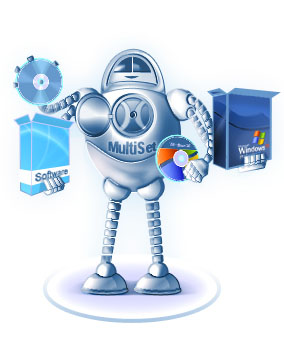Some Selected PC Hacking Secrets
Almost all system administrators make certain changes and make the system restricted. System Administrators can hide the RUN option, the FIND command, the entire Control Panel, drives in My Computer like D: A: etc. They can even restrict activities of a hacker my disabling or hiding, even the tiniest options or tools.
Most commonly these restrictions are imposed locally and are controlled by the Windows Registry. But sometimes the smart system administrators control the activities of the hacker by imposing restrictions remotely through the main server.
Poledit or Policy Editor is a small kewl tool which is being commonly used by system administrators to alter the settings of a system. This utility is not installed by default by Windows. You need to install in manually from the Windows 98 Installation Kit from the Resource Kit folder. user.dat file that we saw earlier.
The Policy Editor tool imposes restrictions on the user's system by editing the user.dat file which in turn means that it edits the Windows Registry to change the settings. It can be used to control or restrict access to each and every folder and option you could ever think of. It has the power to even restrict access to individual folders, files, the Control Panel, MS DOS, the drives available etc. Sometimes this software does make life really hard for a Hacker. So how can we remove the restrictions imposed by the Policy Editor? Well read ahead to learn more.
You see the Policy Editor is not the only way to restrict a user's activities. As we already know that the Policy Editor edits the Windows Registry(user.dat) file to impose such restrictions. So this in turn would mean that we can directly make changes to the Windows Registry using a .reg file or directly to remove or add restrictions.
Launch Regedit and go to the following Registry Key:
HKEY_CURRENT_USER/Software/Microsoft/CurrentVersion/Policies
Under this key, there will definitely be a key named explorer. Now under this explorer key we can create new DWORD values and modify it's value to 1 in order to impose the restriction. If you want to remove the Restriction, then you can simply delete the respective DWORD values or instead change their values to 0. The following is a list of DWORD values that can be created under the Explorer Key-:
NoDeletePrinter: Disables Deletion of already installed Printers
NoAddPrinter: Disables Addition of new Printers
NoRun : Disables or hides the Run Command
NoSetFolders: Removes Folders from the Settings option on Start Menu (Control Panel, Printers, Taskbar)
NoSetTaskbar: Removes Taskbar system folder from the Settings option on Start Menu
NoFind: Removes the Find Tool (Start >Find)
NoDrives: Hides and does not display any Drives in My Computer
NoNetHood: Hides or removes the Network Neighborhood icon from the desktop
NoDesktop: Hides all items including, file, folders and system folders from the Desktop
NoClose: Disables Shutdown and prevents the user from normally shutting down Windows.
NoSaveSettings: Means to say, 'Don't save settings on exit'
DisableRegistryTools: Disable Registry Editing Tools (If you disable this option, the Windows Registry Editor(regedit.exe) too
will not work.)
NoRecentDocsHistory: Removes Recent Document system folder from the Start Menu (IE 4 and above)
ClearRecentDocsOnExit: Clears the Recent Documents system folder on Exit.
Nolnternetlcon: Removes the Internet (system folder) icon from the Desktop
Under the same key: HKEY_CURRENT_USER/Software/Microsoft/CurrentVersion/Policies you can create new subkeys other than the already existing Explorer key. Now create a new key and name it System. Under this new key, system we can create the following new DWORD values(1 for enabling the particular option and 0 for disabling the particular option):
NODispCPL: Hides Control Panel
NoDispBackgroundPage: Hides Background page.
NoDispScrsavPage: Hides Screen Saver Page
NoDispAppearancePage: Hides Appearance Page
NoDispSettingsPage: Hides Settings Page
NoSecCPL: Disables Password Control Panel
NoPwdPage: Hides Password Change Page
NoAdminPaqe: Hides Remote Administration Page
NoProfilePage: Hides User Profiles Page
NoDevMgrPage: Hides Device Manager Page
NoConfigPage: Hides Hardware Profiles Page
NoFileSysPage: Hides File System Button
NoVirtMemPage: Hides Virtual Memory Button
Similarly, if we create a new subkey named Network, we can add the following DWORD values under it(1 for enabling the particular option and 0 for disabling the particular option):
NoNetSetupSecurityPage: Hides Network Security Page
NoNelSetup: Hides or disables the Network option in the Control Panel
NoNetSetupIDPage: Hides the Identification Page
NoNetSetupSecurityPage: Hides the Access Control Page
NoFileSharingControl: Disables File Sharing Controls
NoPrintSharing: Disables Print Sharing Controls
Similarly, if we create a new subkey named WinOldApp, we can add the following DWORD values under it(1 for enabling the particular option and 0 for disabling the particular option):
Disabled: Disable MS-DOS Prompt
NoRealMode: Disable Single-Mode MS-DOS.
So you see if you have access to the Windows Registry, then you can easily create new DWORD values and set heir value to 1 for enabling the particular option and 0 for disabling the particular option. But Sometimes, access to the Windows Registry is blocked. So what do you do? Go to the Windows Directory and delete either user.dat or system.dat (These 2 files constitute the Windows Registry.) and reboot. As soon as Windows logs in, it will display a Warning Message informing you about an error in the Windows Registry. Simply ignore this Warning Message and Press CTRL+DEL+ALT to get out of this warning message.(Do not press OK) You will find that all restrictions have been removed.
The most kind of restriction found quite commonly is the Specific Folder Restriction, in which users are not allowed access to specific folders, the most common being the Windows folder, or sometimes even access to My Computer is blocked. In effect, you simply cannot seem to access the important kewl files which are needed by you to do remove restrictions. What do you? Well use the RUN command. (START >RUN). But unfortunately a system administrator who is intelligent enough to block access to specific folder, would definitely have blocked access to the RUN command. Again we are stuck.
Windows is supposed to be the most User Friendly Operating System on earth. (At least Microsoft Says so.)
It gives the User an option to do the same thing in various ways. You see the RUN command is only the most convenient option of launching applications, but not the only way. In Windows you can create shortcuts to almost anything from a file, folder to a Web URL. So say your system administrator has blocked access to the c:\windows\system folder and you need to access it. What do you do? Simply create a Shortcut to it. To do this right click anywhere on the desktop and select New > Shortcut. A new window titled Create Shortcut pops up. Type in the path of the restricted folder you wish to access, in this case c:\windows\system. Click Next, Enter the friendly name of the Shortcut and then click Finish. Now you can access the restricted folder by simply double clicking on the shortcut icon. Well that shows how protected and secure *ahem Windows *ahem is.
HACKING TRUTH: Sometimes when you try to delete a file or a folder, Windows displays an error message saying that the file is protected. This simply means that the file is write protected, or in other words the R option is +. Get it? Anyway, you can stop Windows from displaying this error message and straightaway delete this file by changing its attributes to Non Read Only. This can be done by Right Clicking on the file, selecting Properties and then
unselecting the Read Only Option.
There is yet another way of accessing restricted folders. Use see, DOS has a lovely command known as START. Its general syntax is:
START application_path
It does do what it seems to do, start applications. So in you have access to DOS then you can type in the START command to get access to the restricted folder. Now mostly access to DOS too would be blocked. So again you can use the shortcut trick to launch, c:\command.com or c:\windows\command.com. (Command.com is the file which launches MS DOS).
Accessing Restricted Drives.
The problem with most system administrators is that they think that the users or Hackers too are stupid. Almost all system administrators use the Registry Trick (Explained Earlier) to hide all drives in My Computer. So in order to unhide or display all drives, simply delete that particular key.(Refer to beginning of Untold Secrets Section.)
Some systems have the floppy disk disabled through the BIOS. On those systems if the BIOS is protected, you may need to crack the BIOS password. (For that Refer to the Windows Hacking Chapter). Sometimes making drives readable (Removing R +) and then creating Shortcuts to them also helps us to get access to them.
Further Changing your Operating System's Looks by editing .htt files
If you have installed Windows Desktop Update and have the view as Web Page option enabled, you can customise the way the folder looks by selecting View > Customise this folder. Here you can change the background and other things about that particular folder. Well that is pretty lame, right? We hackers already know things as lame as that. Read on for some kewl stuff.
Well, you could also change the default that is stored in a Hidden HTML Template file (I think so..) which is nothing but a HTML document with a .htt extension. This .htt file is found at: %systemroot%\web\folder.htt.
The %systemroot% stands for the drive in which Windows is Installed, which is normally C:
You can edit these .htt files almost just like you edit normal .HTM or .HTML files. Simply open them in an ASCII editor like Notepad. The following is a list of .htt files on your system which control various folders and which can be edited to customise the way various folders look.
controlp.htt Control Panel
printers.htt Printers
mycomp.htt My Computer
safemode.htt Safe Mode
All these files are found in the web folder in %systemfolder%. The folder.htt file has a line:
'Here's a good place to add a few lines of your own"
which is the place where you can add your own A HREF links. These links would then appear in the folder whose folder.htt file you edited. All this might sound really easy and simple, but you see these .htt files do not contain normal HTML code, instead they contain a mixture of HTML and web bots. Hence they can be difficult for newbies to understand
 Transfer speed improvement. Proxy servers accumulate and save files that are most often requested by thousands of Internet users in a special database, called “cache”. Therefore, proxy servers are able to increase the speed of your connection to the Internet. The cache of a proxy server may already contain information you need by the time of your request, making it possible for the proxy to deliver it immediately.
Transfer speed improvement. Proxy servers accumulate and save files that are most often requested by thousands of Internet users in a special database, called “cache”. Therefore, proxy servers are able to increase the speed of your connection to the Internet. The cache of a proxy server may already contain information you need by the time of your request, making it possible for the proxy to deliver it immediately.



















